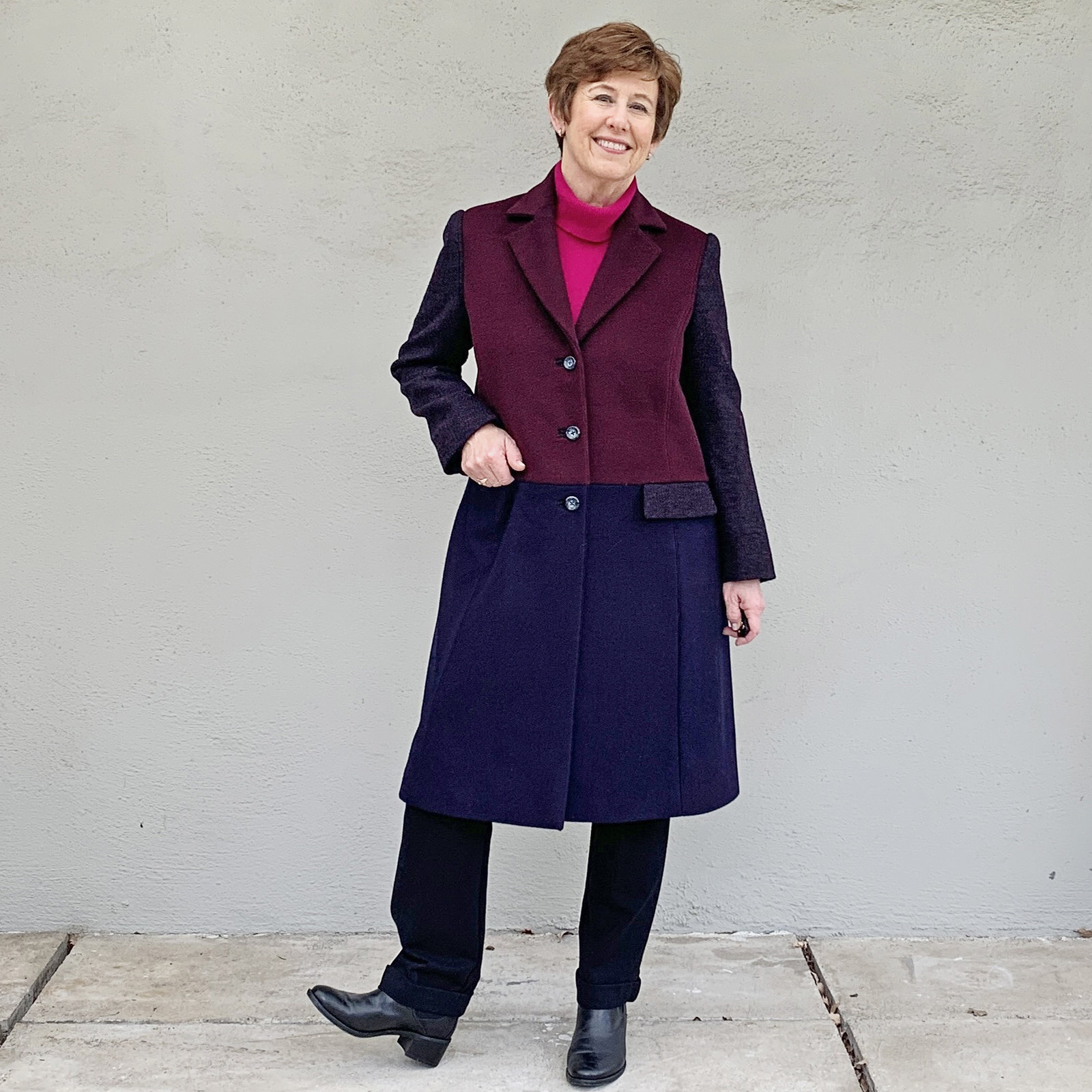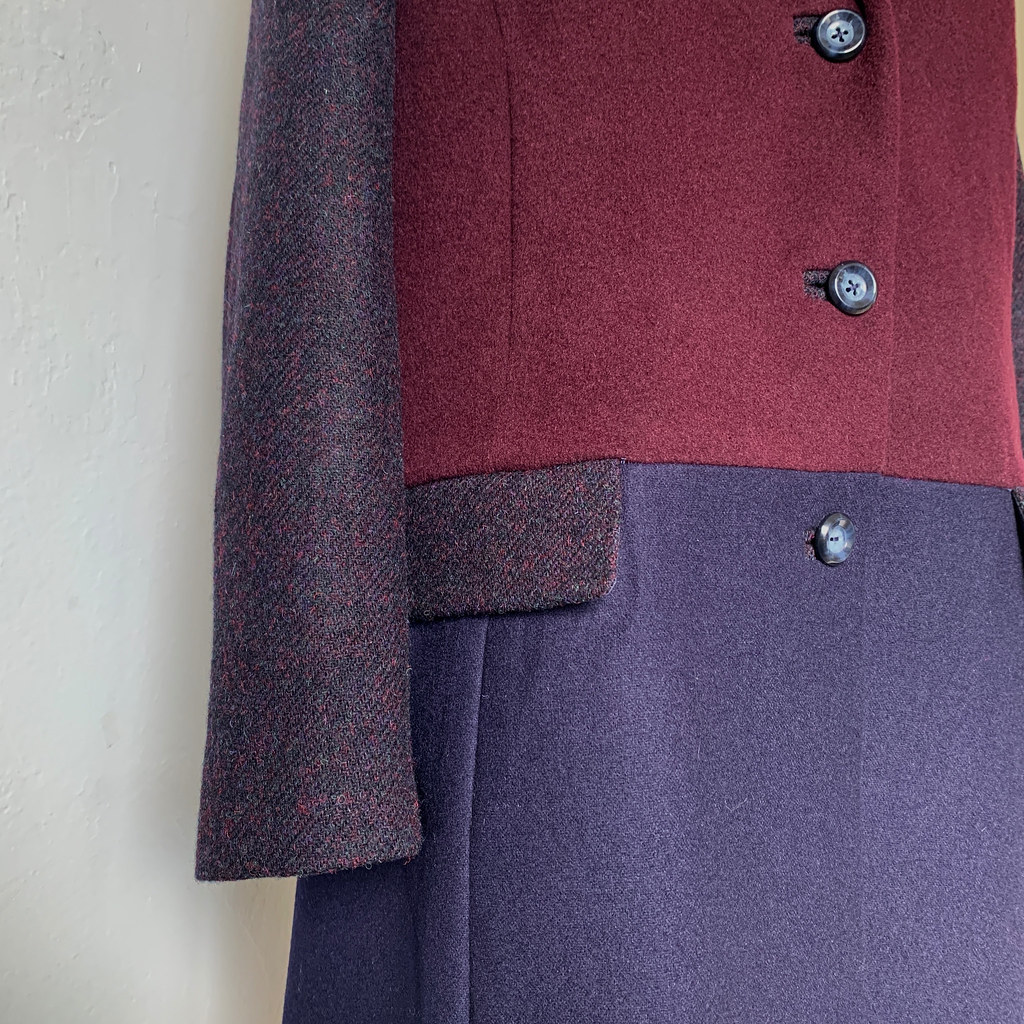What is it about making coats that is so satisfying? I think they are my favorite item to make but I'm starting to think I'm getting to coat maximum - or at least my closet is saying so. But if they are all as nice as this one I will keep doing it. This blog post is a look at the finished coat, for lots of fitting and construction details see my previous post here.

I still can't get over how nicely the colors of these various remnant fabrics go together. In my previous post I have links to the blog posts of the previous projects that resulted in these remnants.
Photographing this coat has made me crazy, the colors looks different in every image and various times of day, sunny or cloudy etc. These photos in the park on what was an almost rainy day are the most accurate of how it looks in person.
I lightened the shadows on this one to make the collar more visible. I used Burda 6845 which is an envelope pattern with princess seams and option of the horizontal seam which I used. If I was being really picky I think the lapels are a tiny bit on the narrow side but that's just my style preference.

I wrote about fitting and construction details in the previous post so I don't have much more to say about that. But if I can give some outerwear sewing tips they are 1. plenty of interfacing 2. grade the seams and 3. press (with care). Also I really like this photo which shows how it is the stitching lines that match on a sleeve, not the edges. Confession time - I almost never do any gathering of the sleeve cap or press it to shape before I sew the sleeves in. Which is contrary to sewing wisdom but my method seems to work for me!


It took some time and concentration to get that horizontal color block seam to line up precisely when buttoned and I am very satisfied with the result. FYI, 3 buttons, probably sewn on a total of 8 times, on/off, move a tiny fraction of an inch, sew again, etc. The seams all line up as well which also entailed some unpicking and restitching with some tiny adjustments. But that is the point of this coat so it was worth the time.

For the lining I used navy blue bemberg rayon throughout.
I have done a coat with a color block lining to match the outside but as this coat was remnants I thought it was a bit silly to buy more lining fabric when I already had this navy blue.


So that's about it for my latest coat project, a very satisfying one on many levels. We are in the midst of a big rainstorm but I think spring is right around the corner and I have a couple of new t-shirt patterns that I might try out next.

Happy almost Spring Sewing,
Beth
Today's garden photo, a camellia that needs a good trim once all the flowers are gone. But I can't do it now while all these beautiful flowers are on it. And the bees are in heaven.
































